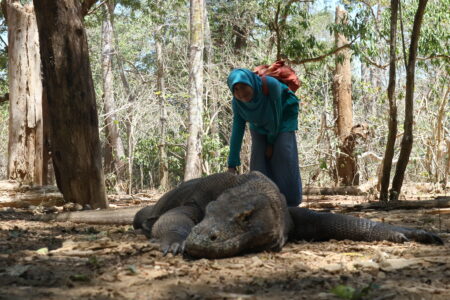
Sometimes, figuring out what you want to pursue in university means experiencing the world and its offers.
In Adinda Peyra’s case, this involved hiking up volcanoes in Italy’s Aeolian Islands every weekend. A workout wasn’t the only thing Adinda got out of these trips, though – the geologists and volcanologists who led these tours would share their knowledge, and later, Adinda would even get access to their libraries to read more on the subject.
With her interest snowballing, Adinda knew exactly what she wanted for her university degree: studying geology.
Back in her home country of Australia, she enrolled at Macquarie University’s BS in Science, majoring in Earth and Environmental Sciences.
There, her fascination with volcanoes drove her choice of electives – though not in the direction she might have expected.
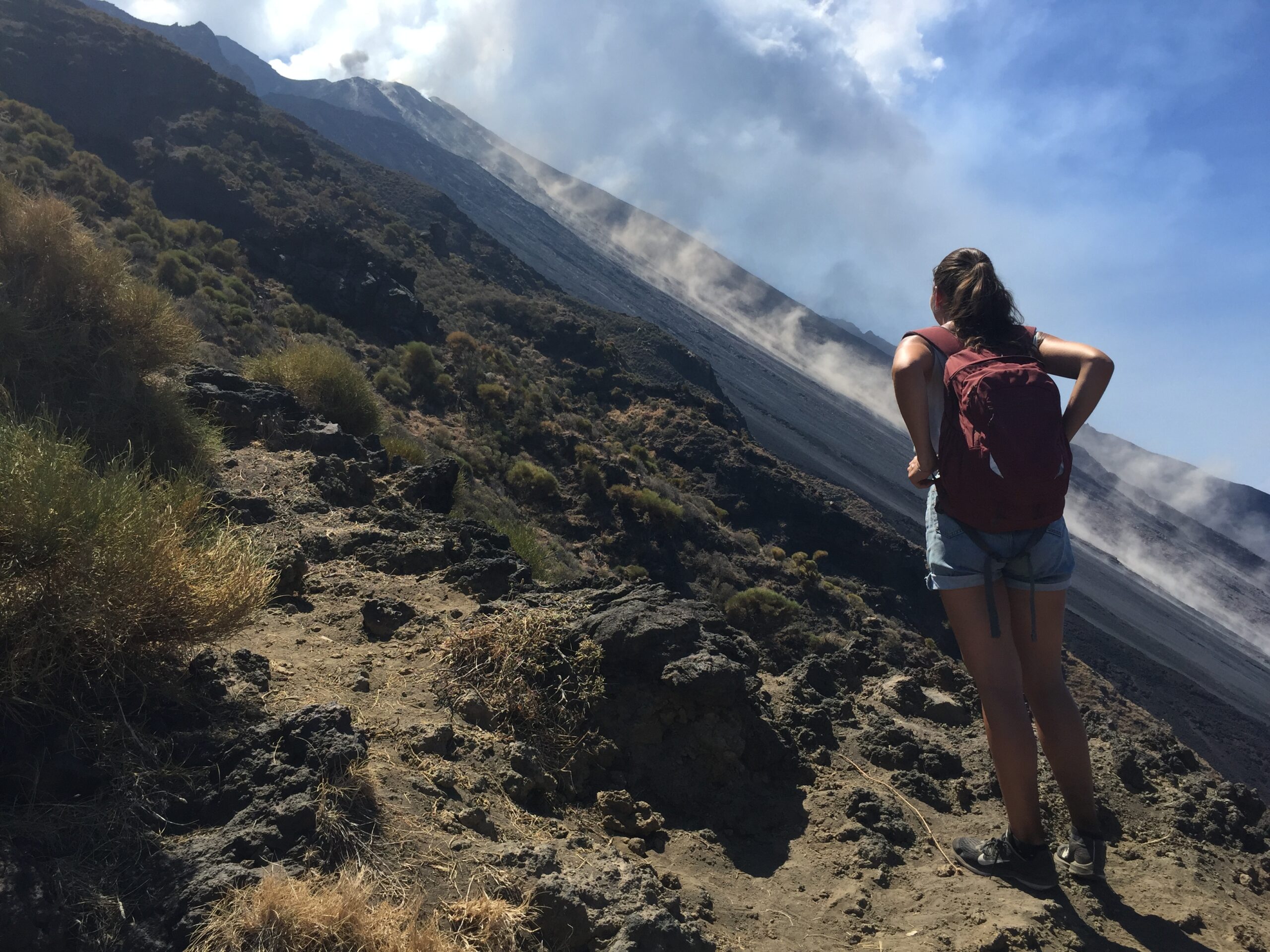
Studying geology is more than just staring at rocks and climbing mountains – it’s about finding a sustainable solution to mitigate disasters too. Source: Adinda Peyra
What you can really achieve by studying geology
The International Union of Geological Sciences defines geology as the scientific study of the Earth, encompassing its composition, structure, processes that shape it, and its history throughout time.
“It goes beyond looking at a pretty rock; it takes a deep dive into its characteristics to help us understand the dynamics of our planet, from its interior to the atmosphere and everything in between,” explains Adinda.
As an aspiring scientist, Adinda hopes to provide knowledge in geological history, consequent monitoring, modelling, and early warning detection and analysis of geohazards to support mitigation strategies. This interest can be alluded to Adinda’s father, who had worked with the aid agency Caritas Australia, which tackles global issues like food and water insecurity, gender-based violence, and national disaster readiness.
For Adinda, being able to use her scientific knowledge for disaster management meant helping people around the world.
“We are the first responders; we are the connection and the eyes and ears to the planet,” she says. “We can assist with community resilience and adaptability. By knowing how the earth behaves, we can then assist in providing that knowledge.”
Knowing how the earth behaves also means gaining other perspectives and learning under different conditions – namely, outside of Australia.
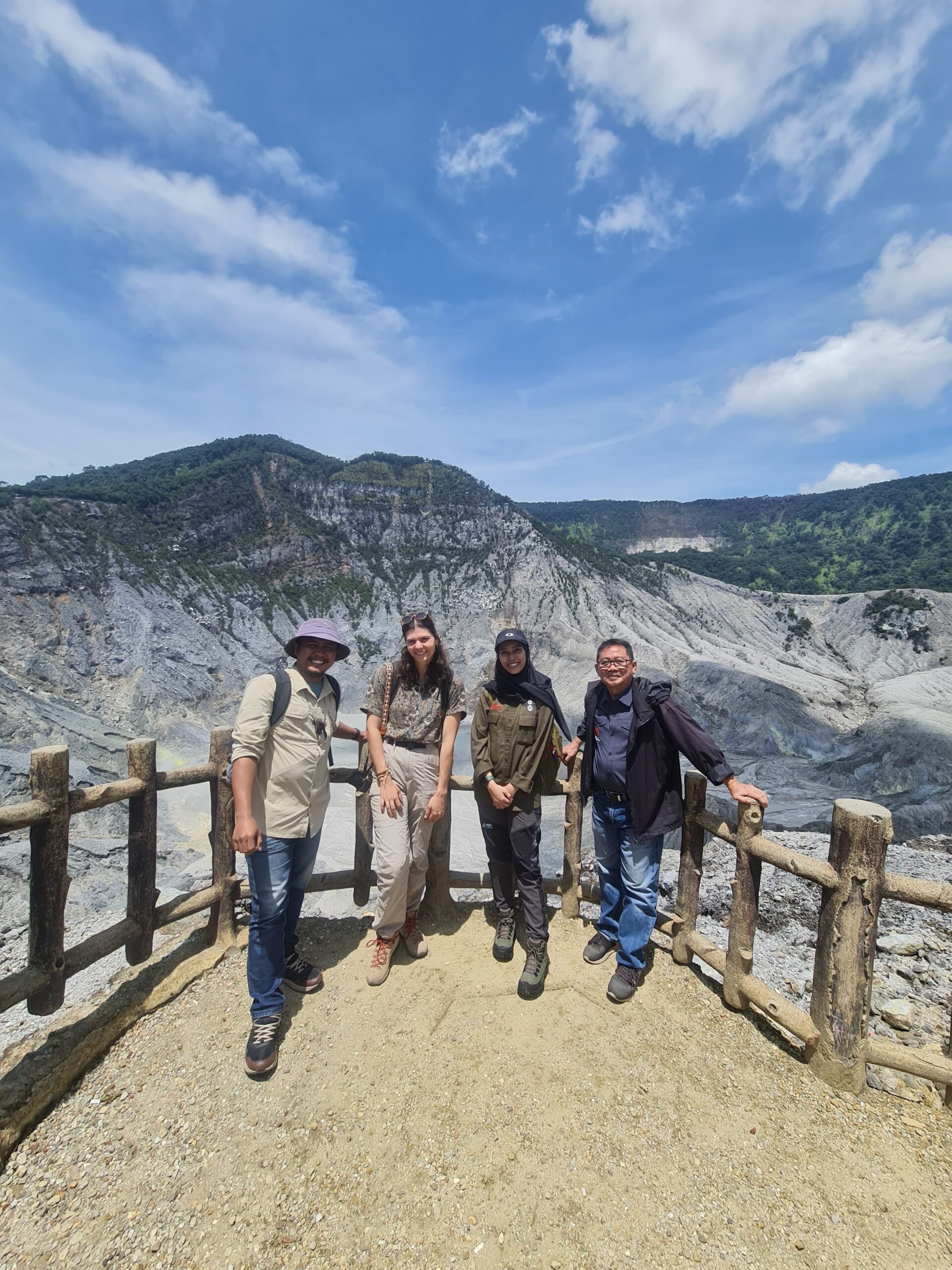
Studying geology has brought Adinda (second from left) all around the world. Here, she is pictured with her fellow students and professor of volcanology in Bandung, Indonesia. Source: Adinda Peyra
Why worldly experience is important in matters of the earth
Adinda’s international upbringing – with her Italian mother and Dutch father – meant she always had a clear idea about the advantages of global exposure. It was, after all, a trip to her mother’s home country that inspired her journey as a geologist.
Luckily for Adinda, the Australian government runs the New Colombo Plan (NCP), which funds short- and long-term study for citizens in the Indo-Pacific region
“We had the whole Indo-Pacific at our fingertips,” says Adinda, “I didn’t want to go somewhere normal; I wanted something different, something off the beaten track.”
Papua New Guinea, which many might not even consider, was Adinda’s first choice. Just as her father’s work had inspired her to connect her love for studying geology to making an impact in society, his work with and at the island country was a driving factor for her to choose the island country.
Better yet, for anyone who hopes to study geology, the country is situated on the Pacific Ring of Fire, right at the point of collision of several tectonic plates.
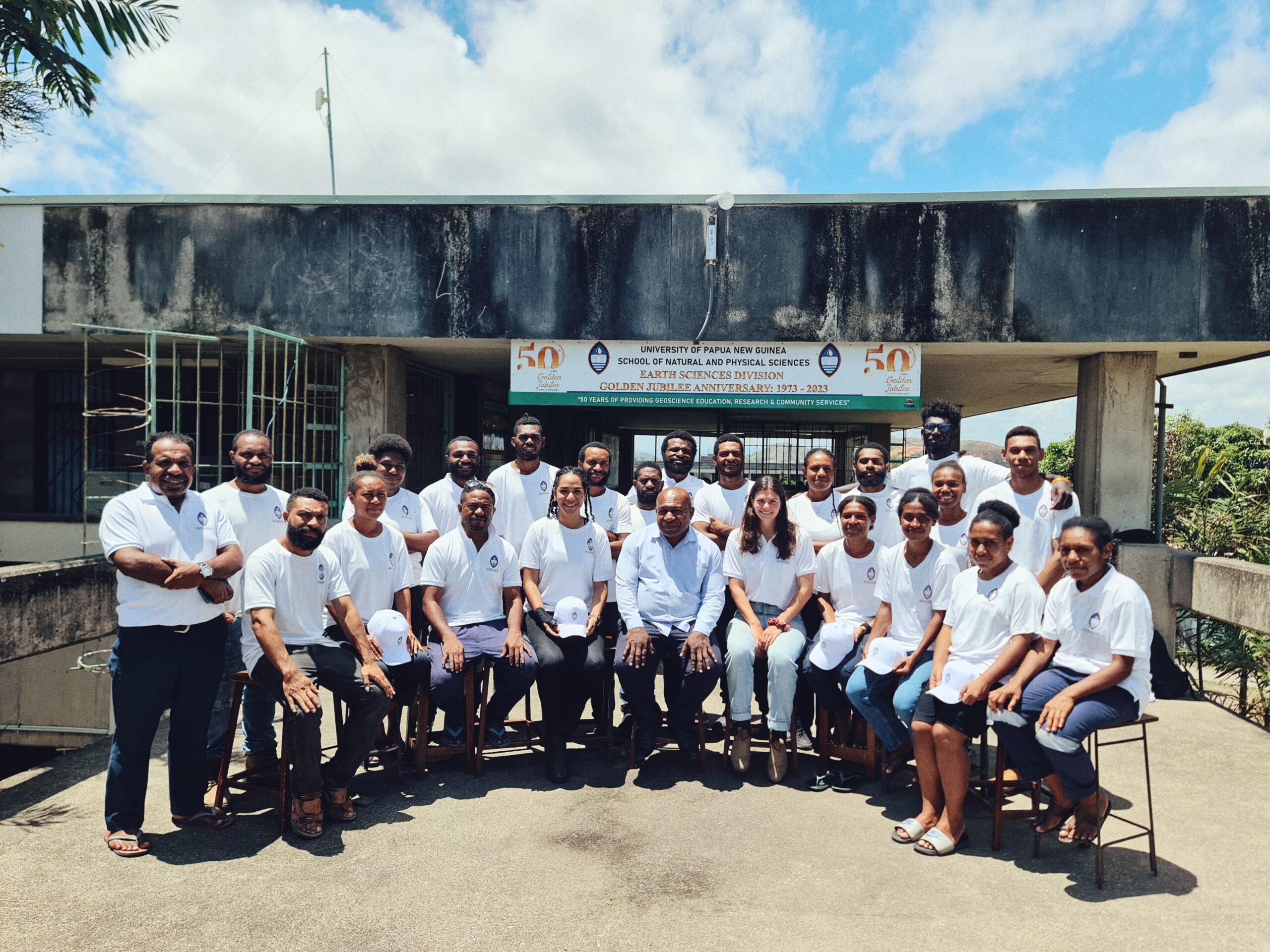
Adinda pictured with her peers and professor at the University of Papua New Guinea’s Earth Sciences Division of the School of Natural and Physical Sciences. Source: Adinda Peyra
So, for five months, Adinda attended the University of Papua New Guinea’s Earth Sciences Division of the School of Natural and Physical Sciences.
“My time in Papua New Guinea has offered a real-world perspective on the intricacies of geohazard management and the critical role of effective disaster risk reduction strategies in different parts of the world,” shared Adinda on the university’s website.
Once her time there was up, Adinda moved on to her next destination on the Pacific Ring of Fire – Japan.
“From a disaster management perspective, Papua New Guinea is very challenged by disasters financially, and I wanted to learn what the opposite of that could look like,” she says. “So I decided to go to Japan, where the development of infrastructure is ahead of others, and the support for the science is very strong too.”
Adinda’s first three months in the snowy environment of Sapporo, Hokkaido, were spent learning Japanese – not what you might expect of someone studying geology.
Learning the language, however, was a rewarding experience that not only gave Adinda an insight into Japan’s customs and traditions but was also a crucial part of “revealing the profound importance of communication in both disaster risk reduction and cross-cultural connections in foreign contexts,” she writes on a LinkedIn post.
This is especially important, given that there is no one-size-fits-all solution to disaster risk reduction – a fact that Adinda realised during her time in Papua New Guinea and Japan.
“Japan’s engineering for disaster risk management is straightforward, so the topics I was working on were mostly disaster preparation for tourists, which means that their fundamental basics are already covered,” she shares. “Whereas in Papua New Guinea, we were still debating how to prepare the community. We can’t stash food in houses because there is so much poverty that food would be stolen.”
“I had to change my mindset to view the country’s dynamic, economic, and political structure at that moment and then cater my strategies to that situation.”

Being abroad and studying geology has opened Adinda‘s eyes to problems and solutions she might never have come across had she remained in Australia. Source: Adinda Peyra
In the three months following her language lessons, Adinda was hard at work at Japan’s Institute of Natural Hazards and Disaster Recovery. There, she learned the ropes as a researcher under the guidance of Niigata University’s Kyoko Kataoka and Satish Kumar.
This was also the time that helped Adinda better understand Japan’s sentiments towards disasters – pivotal occurrences that shape the nation to be remarkably resilient to geohazards.
“These events had, over time, forged strong relationships between politics, science, and cultural attitudes that have enabled them to develop true feats of engineering and mitigation strategies,” writes Adinda in a LinkedIn post.
“In Australia, we often research to explore and discover through science. My experience in working at Niigata University, I noticed research was very much conducted with the needs of the community as the drive of the research. I saw a strong engagement between the university, outside institutions and community organisations. Each of them working closely and collaborating on community issues.”
Hungry for more knowledge, Adinda’s next steps brought her to Indonesia’s University of Gadjah Mada. There, she undertook a six-month research internship exploring the role scientists play in preparation and issuing early warnings during volcanic eruptions in the country.
More specifically, her work involved bridging the communication gaps between the scientific world with local communities.
“The challenge lies in harmonising scientific principles with the deeply rooted cultural narratives of local communities, and building a network founded on trust, mutual understanding, and resilience,” wrote Adinda in a separate LinkedIn post.
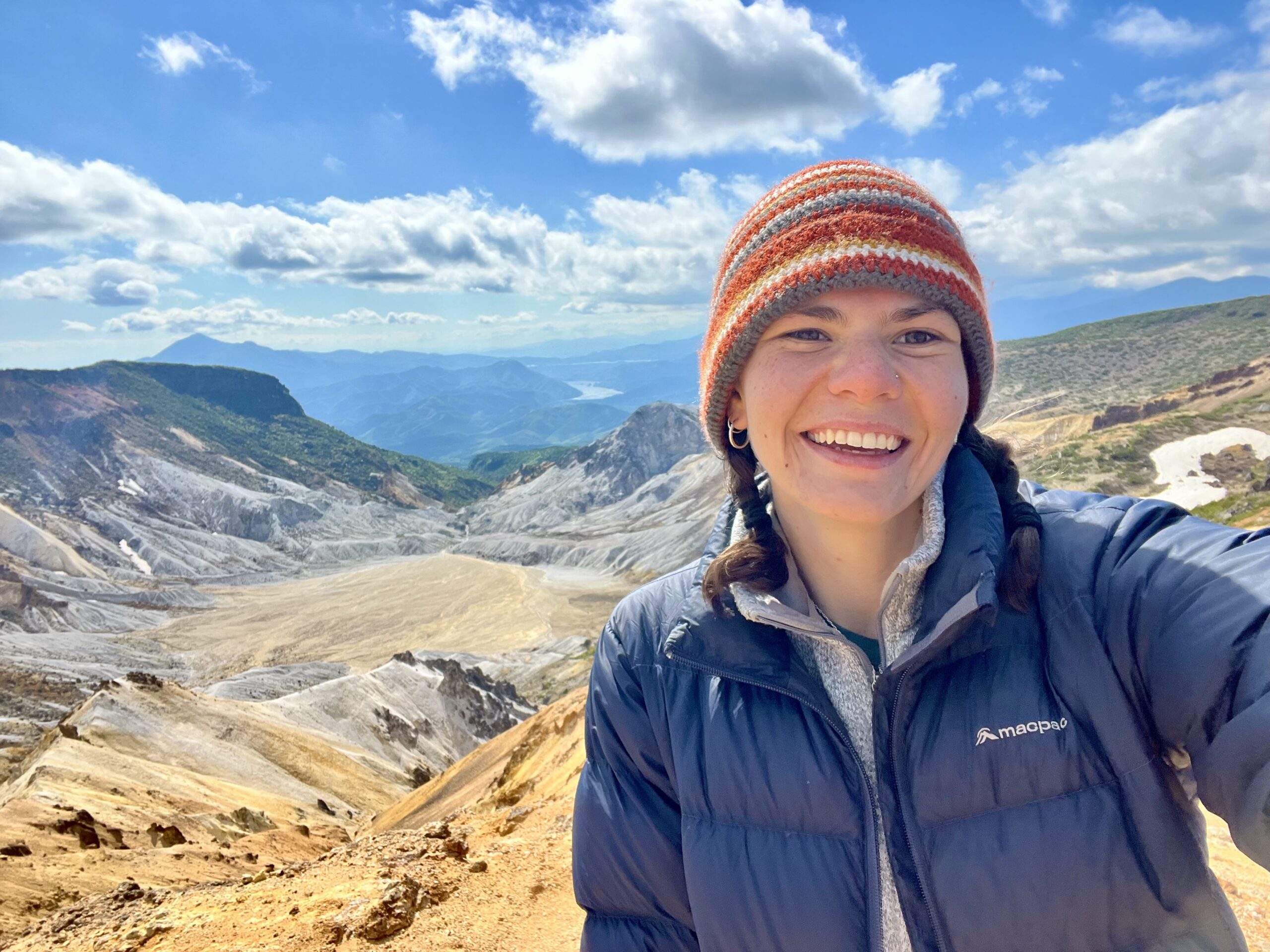
Adinda’s journey in studying geology has brought her far and wide – and she’s ready to use her newfound knowledge to help prepare the world for future disasters. Source: Adinda Peyra
Preparing the world one finding at a time
Moving thousands of miles away has no doubt made Adinda a better geologist.
“Not because the education is better abroad because it but has provided a more worldly approach to my speciality,” she says.
Geology, after all, encompasses our understanding of the human–planetary relationship – to look deep into Earth’s history, monitor its constantly evolving environment, and seek to predict possible futures of our planet for renewable and sustainable development.
From a disaster management perspective, Adinda knows that she could read all about Papua New Guinea, Japan, or even Indonesia’s geohazards, and it would only get her so far.
It was only through living in that country and learning all its nuances that she could help it mitigate hazards better.
“I would still be inflicting strategies from the context of Australia, not knowing the day-to-day socio-economic and political challenges that inevitably play in geology and geohazard management,” she shares.
“As scientists, we often just stick our noses in the books and rocks, and we don’t necessarily consider the much wider picture,” shares Adinda. “NCP has provided me this unique opportunity to step away to see disaster risk reduction from different angles and think about how I can better communicate to people as a scientist.”
Now, Adinda’s got her sights set on the future.
Armed with a master’s degree and a job in a monitoring agency supporting disaster management, she’s now ready to give back more.
“Because I do, at the end of the day, want to give back to the world.”








